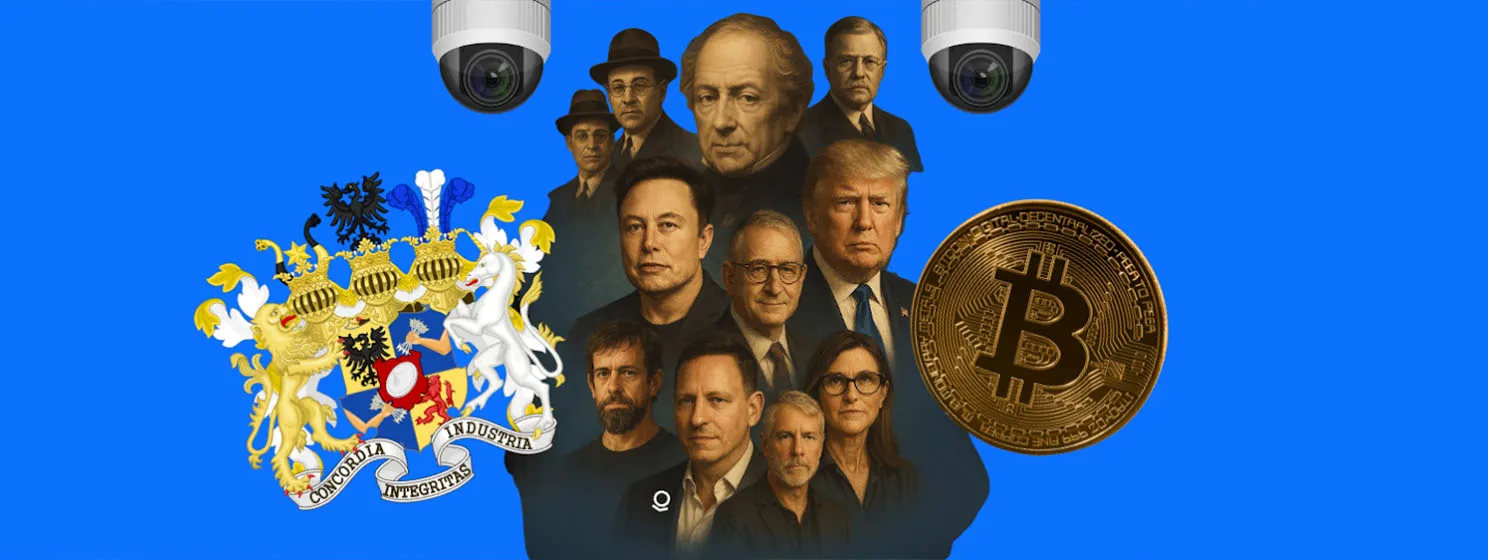|
Getting your Trinity Audio player ready...
|
The second video in Ryan X. Charles’s Bitcoin Whitepaper Theory of Bitcoin series focuses on the first paragraph (see my key takeaways from the whitepaper title and abstract video here) and we learn from Dr. Craig Wright what Bitcoin was (and was not) originally designed for.
As anyone who watches this series will notice, the “crypto” hype we see in mainstream and social media is far from Satoshi’s creation and this is important for gambling industry professionals to understand. Come with me as I share my key takeaways from this conversation between Charles and Dr. Wright, uncovering more on why Bitcoin was created and how it can alleviate a number of pain points within the gaming space and far beyond.
Bitcoin was created to replicate the cash system online
Satoshi never intended to replace the world’s monetary system with Bitcoin and governments will have their own fiat money for the long term. Rather, the technology was built to replicate a cash system via the internet because when it comes to the exchange of goods and services, “cash works.”
When the internet was commercialized, there were no online payment systems at all and eventually credit cards were added in, but the online payment system was insecure and still is.
Bitcoin was created during an early digital cash era
There were other digital cash systems available when Bitcoin was created, for example, Paypal was extremely popular as a trusted third party to send money. Paypal, however, relies on financial institutions. eCash, a system that allowed users to create a token based on what they had in the bank, was also around but the bank served as an intermediary.
There were proof of work crypto currencies and peer to peer networks in existence as well such as Mojo Nation, Rivest (RSA) and Hashcash. Mojo was a peer system with value coming from tokens, but unlike Bitcoin, there was no set limit of coins to be distributed. Mojo was more of a “socialist” type system, to the tune of printing more coins to devalue the ones in circulation if one person was becoming too wealthy.
“These earlier crypto currencies have no understanding of economics,” said Dr. Wright.
“None of these systems succeeded. Some are broken economically, some broken legally, some both,” he said.
Weaknesses of the trust-based model
The weaknesses of the trust-based model of payments are well-known, for example with Visa, customers can reverse transactions months after goods were purchased, including deposits into an online casino. It’s easy to defraud with credit cards. According to Dr. Wright, the limitations of the trust-based model mostly revolve around the ability (or lack thereof) to do micropayments, something we cannot do with Visa or even with BTC these days as the fees are too high.
With Bitcoin (BSV), there are no charge-backs and the transaction fees are consistently very low.
Bitcoin was not designed to transfer large sums of money
Bitcoin was designed to be a cheap system. Despite popular belief, Bitcoin was not designed to transfer large sums of money, all the AML laws apply to Bitcoin transactions as well as fiat. Bitcoin was designed to be a cash-based system on the internet for small transactions.
“I can transfer large amounts of money [using banks] cheaper than BTC,” Dr. Wright pointed out.
It’s also important to remember what cash is and how it’s used in society today. When you want to buy a house, you can’t pay for the house with 800,000 in cash in a suitcase, you’ve got to prove where that money came from. Without the proper KYC, you can’t pay for a house in 800K worth of Bitcoin either.
Bitcoin was designed for micropayments
The truly disruptive aspect of Bitcoin is its ability to do micropayments. With Paypal, with Visa, with MasterCard, you can’t do micropayments. The fees are simply too high. Minimum transaction requirements are in the order of dollars. Items of low value such as a cup of coffee are expensive because most customers use cards to buy coffee and the fees associated with using that card are high.
Contactless credit card payments were introduced after the Bitcoin whitepaper was written, but they still don’t solve the microtransaction challenges we continue to have today. The transaction fees for contactless payment are still way too high for microtransactions, plus your card can easily be stolen and the thief can tap and pay their way across town.
A perfect example of how microtransactions could be useful is within the gaming space. For those who are unaware, Dr. Wright used to work with the Aussie-based Centrebet and had a relationship with brands such as Playboy Casino, MGM and Lasseters, so the gaming industry has always been on his mind. The ability to be able to take bets online for 5 cents or even one cent are impossible without Bitcoin, but with Bitcoin, you could have a completely legal online gambling operation that takes just cents, Dr. Wright pointed out.
As it stands today, a model does not exist where you can pick a movie and pay more and more as you watch. We only have subscription-based models or we can buy or rent the whole movie in advance with only the movie trailer (which can be misleading) and reviews (which can also be misleading) to make a decision. You can’t get your money back if you dislike the movie you rented.
With the ability to do micropayments, people could pay more and more as they watch a movie, people could leverage the internet and sell pages of articles for a few cents. You could pay a fraction of a cent for an internet search rather than having a free service at the cost of your data being sold to advertisers. This way, you become the customer to the search engines and therefore get the results you actually want.
Advertising evils
The current advertising model is troubling for society. Bitcoin can fix this with micropayments and the ability to pay for our searches and to pay for the use of social media vs. using these services for free at the expense of our data.
“Advertising is the root of all evil as far as I see it in the modern world,” Dr. Wright said.
Advertisers control everything—they can even control content by telling the platforms they advertise with that particular content is not appropriate for the advertiser’s customers. We, the consumers, are the product with social media—the platforms earn money by selling our data to advertisers. Even if you don’t use Twitter, your cookies from other websites get sent out to them.
(To learn about more effective ways to advertise your gaming product to an audience that is genuinely interested, check out Tonic Pow—an innovative promotions marketplace that utilizes Bitcoin and micropayments.)
“Alert Key” and Reversible payments: possible with third party involvement
There was a so-called “alert key” in the original Bitcoin protocol, but the Core developers removed it bit by bit. According to Dr. Wright and Charles, people didn’t understand the vision and potential of Bitcoin and subsequently deleted what they did not understand. These developers were also motivated in the wrong direction—they were anarchists, Dr. Wright said.
Satoshi’s vision was to give alert keys to courts or police and allow others (not Satoshi) to act as the mediators. For example, someone could make a fraud complaint and put out an alert that could be authorized through government means. A court order would not change the existing transaction on the blockchain, rather it would create a new entry.
The victim of fraud would have to prove their money was stolen to one of these mediators and using the alert key, everyone on the network would know right away not to accept that money. This concept is similar to how cash covered in dye is a sign that the cash was stolen at some point along the way and merchants should not accept it as payment.

 07-15-2025
07-15-2025 





